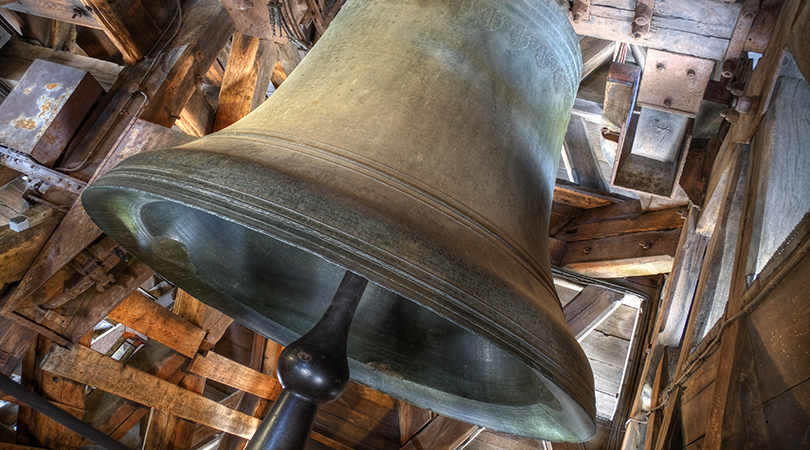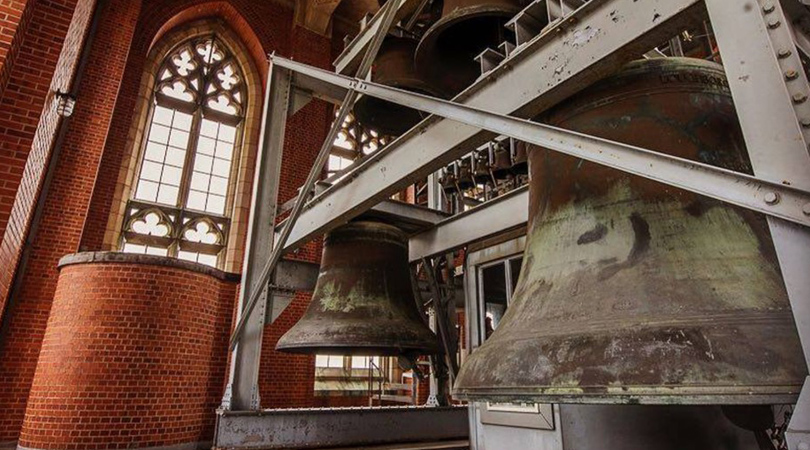Bell towers adorn some of civilization’s most magnificent buildings and have been a fixture of architectural design for a thousand years. Captivating for their imposing height and monumental scale, they are made more human by the bells within. Tower bells are the heartbeat of a community. In cities all over the world, neighborhoods are defined by the distinctive tones and individual resonance of bells.
Throughout history, bell towers accompanied churches, civic centers, and town halls, as these structures were most often found at the city center and therefore were accessible to the greatest number of people. Tower bells announced the time, significant occasions, or cause for alarm. The higher the tower, the further the ringing could be heard – and the greater the prestige. Rising above parks, universities, and memorials, bell towers continue to be a focal point for community activity.

Image: The third-tallest bell-and-clock tower in the world, Sather Tower at the University of California, Berkeley, with the Golden Gate Bridge in the distance.
Most bell towers have between one and five bells, but a single tower might hold dozens. A set of six, eight, ten or twelve bells can be rung in a traditional manner called change ringing. Harmonically-tuned carillons of more than 23 bells can play beloved melodies across rooftops.
Tower bells may be chimed to call the faithful to worship, tolled for funerals, struck on the hour or quarter-hour, sounded in case of fire, or rung to warn ships of coastal hazards (lighthouse bells were often installed as a counter to dense fog). No matter their purpose, tower bells still find a place in a modern society because of their ability to stir the human soul.





